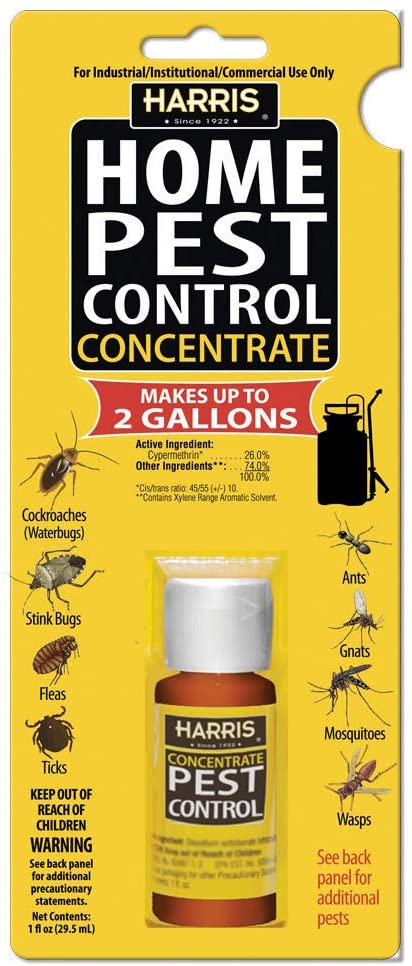Bed Bug Therapy Breakdown: Contrasting Chemical Vs. Non-Chemical Solutions
In the world of insect control, particularly when managing the relentless problem of bed pests, the choice between chemical and non-chemical therapy solutions can be an essential one. Both strategies provide unique benefits and drawbacks, influencing variables such as efficiency, safety and security considerations, and general expense. By examining the nuanced details of each approach, a clearer understanding of which course to go after in dealing with a bed insect invasion can be acquired.
Performance of Chemical Therapies
Chemical treatments for bed bug infestations have actually been extensively identified for their powerful and rapid effectiveness in removing these parasites. When considering the effectiveness of chemical treatments, it is vital to recognize that they can give a quick and comprehensive service to a bed pest problem. Expert pest control experts typically rely upon pesticides to target bed pests at numerous phases of their life cycle, including eggs, grownups, and nymphs. These chemicals usually function by disrupting the bed bugs' nerves, causing paralysis and eventual fatality.
Furthermore, chemical treatments have the advantage of offering residual results, meaning that they can continue to remove bed pests even after the preliminary application. This recurring activity is specifically helpful in combating any type of possible re-infestations. Furthermore, the quick action of chemical therapies can bring relief to people facing extreme bed bug invasions, enabling them to reclaim control of their home swiftly.
Safety And Security Worry About Chemical Solutions
One crucial facet that needs cautious consideration when utilizing chemical options for bed pest treatment is guaranteeing the safety of passengers and the atmosphere. Direct exposure to specific chemicals used in bed pest therapies can lead to breathing issues, skin irritability, or other unfavorable reactions, particularly in people with pre-existing conditions or level of sensitivities.
Moreover, the environmental effect of chemical solutions is one more considerable factor to consider. Some chemicals utilized in bed insect treatments may be damaging to useful insects, wild animals, and communities if they seep into the soil or water supply. It is necessary to use chemical therapies judiciously, adhering to safety standards, and thinking about less hazardous options to alleviate these dangers and ensure the secure and efficient monitoring of bed bug problems.
Benefits of Non-Chemical Strategies
Taking into consideration the potential safety worries and ecological impact connected with chemical options for bed pest therapy, exploring non-chemical techniques offers an encouraging option with numerous distinct advantages. Non-chemical techniques use a more secure choice for families, specifically those with people, youngsters, or pet dogs delicate to harsh chemicals. These strategies get rid of the dangers of direct exposure to toxic materials, minimizing the possibility for unfavorable wellness impacts. Moreover, non-chemical therapies are visite site environmentally pleasant, as they do not add to air or water contamination, making them a lasting choice for insect control.
In addition, non-chemical options can be effective in targeting bed bugs, consisting of hard-to-reach locations where chemical treatments may not penetrate - A1 bed bug treatment in charlotte. Techniques such as warmth treatment, vacuuming, heavy steam cleansing, and cushion encasements supply thorough obliteration without the use of damaging chemicals.
Limitations of Non-Chemical Treatments

Furthermore, non-chemical therapies commonly require numerous applications to accomplish successful removal. This can be lengthy and may not constantly guarantee complete removal of all bed insects and their eggs, especially in hard-to-reach or concealed locations.
Furthermore, the success of non-chemical therapies greatly depends on proper implementation and thoroughness, which can be challenging for individuals without expert experience. Poor application of non-chemical methods might cause insufficient obliteration, bring about relentless invasions and the requirement for added treatments.
As a result, while non-chemical therapies have their benefits, it is vital to acknowledge these limitations and consider them when determining one of the most reliable technique for taking care of bed bug invasions.
Price Comparison: Chemical Vs. Non-Chemical Options
Offered the limitations connected with non-chemical therapies, a crucial facet to examine in the context of bed bug monitoring is the price contrast in between chemical and non-chemical options. Chemical treatments generally click here to find out more involve the application of insecticides by professionals, which can vary from $250 to $900 per area, relying on the intensity of the problem and the dimension of the location to be dealt with. On the other hand, non-chemical therapies like heat treatment or steam can be a lot more costly, with prices ranging from $1,000 to $6,000 for an entire home. While the first price of chemical treatments may appear reduced, several treatments may be needed to completely remove the problem, potentially enhancing the overall price. On the other hand, non-chemical choices like this may offer a much more lasting and eco-friendly solution, although they can be cost-prohibitive for some individuals. Inevitably, when thinking about the price of bed insect treatment options, it is very important to evaluate the upfront costs versus the effectiveness and lasting sustainability of the chosen method.
Verdict

Taking into consideration the prospective safety concerns and environmental influence linked with chemical remedies for bed insect treatment, exploring non-chemical approaches presents an appealing choice with numerous distinctive benefits.Given the limitations connected with non-chemical therapies, a vital aspect to examine in the context of bed bug management is the price contrast between chemical and non-chemical alternatives. In comparison, non-chemical therapies like heat therapy or vapor can be more expensive, with prices ranging from $1,000 to $6,000 for a whole home. While the first price of chemical therapies may seem lower, multiple treatments may be needed to totally eradicate the problem, possibly boosting the overall expense.In verdict, when comparing chemical and non-chemical bed insect treatment alternatives, it is vital to consider performance, safety, benefits, constraints, and price.